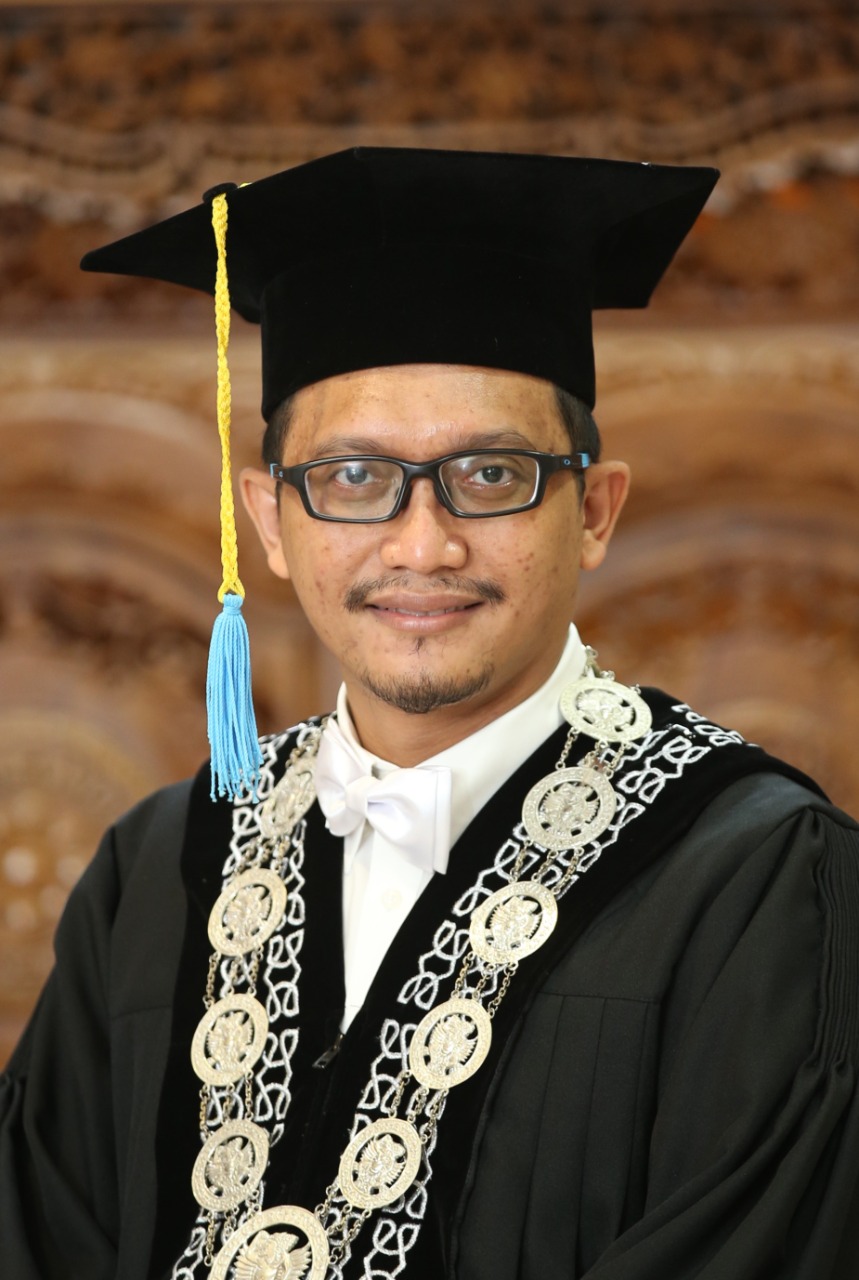Profile of Patients with Viral Infection at the Dermatology and Venereology Outpatient Unit of Dr. Soetomo General Academic Hospital, Surabaya, Indonesia, in 2016-2018

Downloads
Highlights:
The most common viral skin infections at the Dermatology and Venerology Outpatient Unit of Dr. Soetomo General Academic Hospital, Surabaya, Indonesia, in 2016-2018 were shingles, verruca vulgaris, varicella, molluscum contagiosum, and measles.
Viral skin infections predominantly affected late teens (17-25 years old), females, and each disease presented different clinical manifestations and treatments.
Abstract
Introduction: The high incidence of viral skin infections in Indonesia, combined with a lack of understanding of risk factors and prevention measures, poses a significant problem. Few studies have examined the epidemiological profile of viral skin infections in Indonesia. This study aimed to evaluate the profile of patients with viral infections at the Dermatology and Venereology Outpatient Unit of Dr. Soetomo General Academic Hospital, Surabaya, Indonesia, from 2016 to 2018.
Methods: This was a descriptive, retrospective study based on the medical records of 560 patients collected between January 2016 and December 2018 (n=560). All data calculations were performed using the International Business Machines Corporation (IBM) Statistical Package for Social Sciences (SPSS) version 26.
Results: The prevalence of the five viral infections was 71.8% among all patients with viral infections. The most common diagnosis was shingles (47.5%), the most affected age group was late teens (17-25 years old) (21.3%), the most common gender was female (52,9%), the most frequent clinical manifestation was vesicles (52.1%), and the most commonly used therapy type was topical (73.4%).
Conclusion: The number of patients with viral infections at the Dermatology and Venereology Outpatient Unit of Dr. Soetomo General Academic Hospital, Surabaya, Indonesia, has increased annually, requiring more comprehensive management to reduce morbidity and mortality.
Lei V, Petty AJ, Atwater AR, Wolfe SA, MacLeod AS. Skin Viral Infections: Host Antiviral Innate Immunity and Viral Immune Evasion. Front Immunol 2020; 11: 593901. [PubMed]
Lidjaja LN. Karakteristik Penyakit Infeksi Kulit di Poliklinik Klinik Pratama Panti Siwi Jember, Januari 2018–Desember 2020. Cermin Dunia Kedokt 2022; 49: 423–426. [Journal]
Dimawan RSA, Prakoeswa FRS, Pramuningtyas R. Pediatric Viral and Bacterial Skin Infection Profile. Berk Ilmu Kesehat Kulit dan Kelamin 2022; 34: 184–188. [Journal]
Hidayati AN. Infeksi Virus di Kulit. Surabaya: Airlangga University Press, (2023). [Book]
Hebert AA, Bhatia N, Del Rosso JQ. Molluscum Contagiosum: Epidemiology, Considerations, Treatment Options, and Therapeutic Gaps. J Clin Aesthet Dermatol 2023; 16: S4–S11. [PubMed]
Putri YD. Aspek Klinis dan Tatalaksana Varicella pada Kehamilan. J Kedokt Nanggroe Med 2022; 5: 45–53. [Journal]
Purnamasari I, Damayanti D. Herpes Zoster pada Geriatri. Media Dermato-Venereologica Indones 2020; 47: 161–166. [Website]
Maulana A. Aspek Klinis, Diagnosis, dan Tatalaksana Campak pada Anak. J Kedokt Nanggroe Med 2021; 4: 21–27. [Journal]
Marra F, Parhar K, Huang B, Vadlamudi N. Risk Factors for Herpes Zoster Infection: A Meta-Analysis. Open Forum Infect Dis 2020; 7: ofaa005. [PubMed]
Merilyne M, Perdanakusuma DS, Astari L. The Incidence Pattern of Electrical Burns at the Department of Plastic Surgery Dr. Soetomo General Academic Hospital, Surabaya, from January 2014 to December 2017. JUXTA J Ilm Mhs Kedokt Univ Airlangga 2023; 14: 25–28. [Journal]
Nagara AJ, Gustia R. Studi Kliniko-Epidemiologi Pasien di Poliklinik Dermatologi Non-Infeksi RSUP Dr. M. Djamil Padang Tahun 2020 – 2021 (Selama Pandemi Covid-19). J Ners 2024; 8: 1624–1628. [Journal]
Nie NH, Bent DH, Hull CH. Statistical Package for the Social Sciences (SPSS), (2018). [Website]
Wardani FA, Perdanakusuma DS, Indramaya DM. Profile of Working-Age Patients with Keloid and Hypertrophic Scar at Dr. Soetomo General Hospital Surabaya in 2014-2017. JUXTA J Ilm Mhs Kedokt Univ Airlangga 2021; 12: 84–89. [Journal]
Soekidjo N. Metodologi Penelitian Kesehatan. 3rd ed. Jakarta: Rineka Cipta, 2018.
Putra SD, Sandika AS, Anggara A. Herpes Zoster: Laporan Kasus. J Med Prof 2024; 6: 47–53. [Journal]
Fitriani F, Kariosentono H, Prasetyorini B, Oktriana P, Amelinda N. Tata Laksana Herpes Zoster. Medicinus 2021; 34: 50–60. [Journal]
Nair PA, Patel BC. Herpes Zoster. Treasure Island (FL), 2025. [PubMed]
Alim S, Muchtar S, Mulyadi F, Bamahry A, Indarwati RP. Karakteristik Pasien Herpes Zoster di Rumah Sakit Ibnu Sina Makassar Tahun 2016-2017. Fakumi Med J J Mhs Kedokt 2022; 2: 544–551. [Journal]
Dessie AM, Feleke SF, Workie SG, Abebe TG, Chanie YM, Yalew AK. Prevalence of Skin Disease and Its Associated Factors among Primary Schoolchildren: A Cross-Sectional Study from a Northern Ethiopian Town. Clin Cosmet Investig Dermatol 2022; 15: 791–801. [PubMed]
Widipriyatama GR, Damayanti D, Dewanti L, Anggraeni S. Clinical Profile of Contact Dermatitis Patients at the Allergy-Immunology Division of Dermatology and Venereology Outpatient Clinic. Berk Ilmu Kesehat Kulit dan Kelamin 2023; 35: 100–106. [Journal]
Harlim A. Buku Ajar Ilmu Kesehatan Kulit dan Kelamin. Jakarta: Fakultas Kedokteran Universitas Kristen Indonesia, (2019). [Website]
Hidayati AN, Purnamasari I, Hartanto F, Thendria T. Herpes Zoster in COVID-19 patient: A Coexistence or Coincidence? Malaysian J Med Heal Sci 2021; SUPP4: 182–184. [ResearchGate]
Achdiat PA, Larasati R, Hidayah RMN, Avriyanti E, Usman HA, Maharani RH. Atypical HPV Typing: Detection of Genital-Associated HPV Type 6 in Verruca Vulgaris of the Hands and Feet in an HIV-Positive Patient. Int Med Case Rep J 2025; 18: 67–74. [PubMed]
Badri T, Gandhi GR. Molluscum Contagiosum. Treasure Island (FL), 2025. [PubMed]
Saraswati DK, Nurdin D, Sabir M. Moloskum Kontagiosum. J Med Prof 2021; 3: 1–6. [Journal]
Krawiec C, Hinson JW. Rubeola (Measles) (Archived). Treasure Island (FL), 2025. [PubMed]
Zahrah N, Nurani F, Amanda A, et al. Studi Literatur: Analisis Faktor Risiko Campak pada Anak di Indonesia. J Med Malahayati 2023; 7: 748–758. [Journal]
The Indonesian Society of Dermatology and Venereology (Perhimpunan Dokter Spesialis Kulit dan Kelamin Indonesia). Panduan Praktik Klinis bagi Dokter Spesialis Dermatologi dan Venereologi Indonesia. Jakarta, (2021). [Book]
Dr. Soetomo General Academic Hospital, Surabaya (RSUD Dr. Soetomo Surabaya). Panduan Praktik Klinis (PPK) KSM Kesehatan Kulit dan Kelamin. Surabaya, (2022). [Book]
Wijanarko MSP. Herpes Zoster di Kelompok Pediatrik. Cermin Dunia Kedokt 2021; 48: 12–15. [Journal]
Devi M, Ismunandar H, Wintoko R, Hadibrata E, Djausal AN. Diagnosis and Management of Herpes Zoster . Med Prof J Lampung 2022; 12: 40–48. [Journal]
Kauffmann F, Heffernan C, Meurice F, Ota MOC, Vetter V, Casabona G. Measles, Mumps, Rubella Prevention: How Can We Do Better? Expert Rev Vaccines 2021; 20: 811–826. [PubMed]
Copyright (c) 2025 Melati Adinda Putri, Linda Astari, Bramantono Bramantono, Sylvia Anggraeni

This work is licensed under a Creative Commons Attribution-ShareAlike 4.0 International License.
1. The journal allows the author to hold the copyright of the article without restrictions.
2. The journal allows the author(s) to retain publishing rights without restrictions
3. The formal legal aspect of journal publication accessibility refers to Creative Commons Atribution-Share Alike 4.0 (CC BY-SA).




























